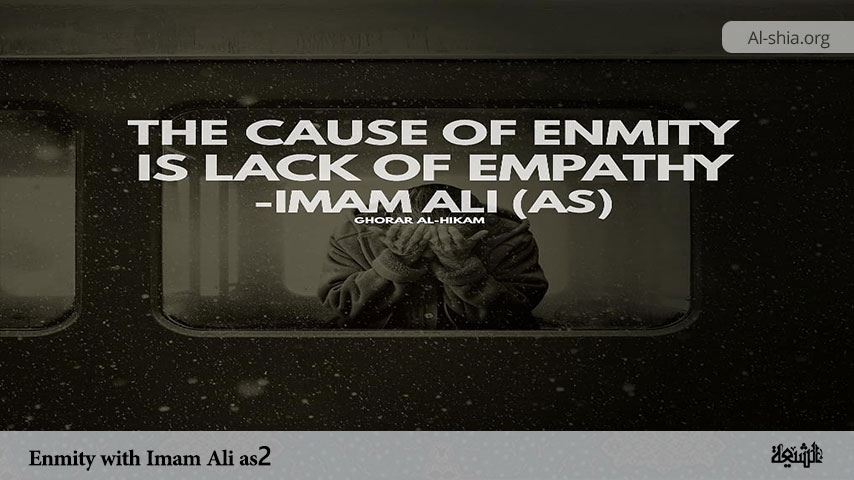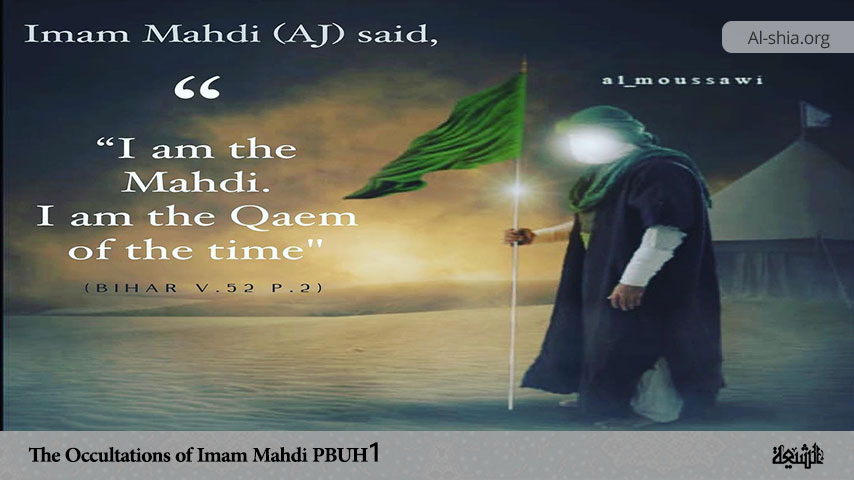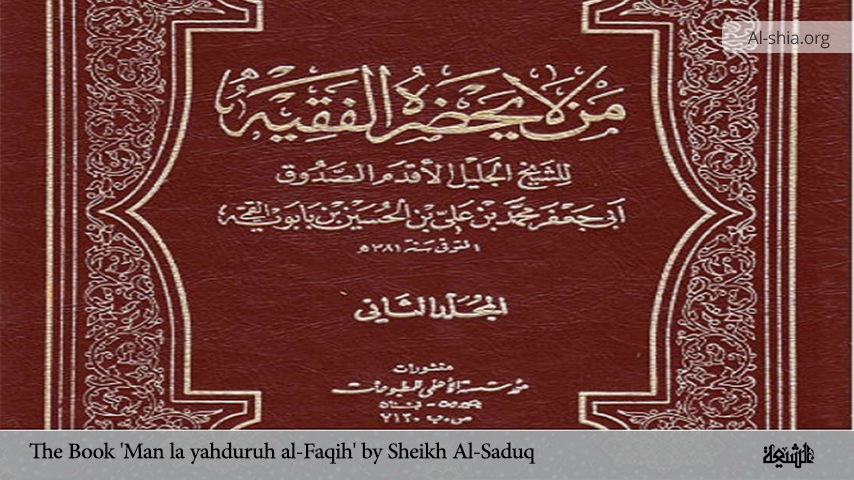In this part of the article titled “Enmity with Imam Ali”, we shall continue with other relevant points on the topic here.
Causes of Enmity with Imam Ali (as) in the Light of Nahjul Balaghah
Mu’awiyah’s letter to the Imam during the War of Siffin claiming equality with the Hashimites on the basis of what he boasted as his genealogy, was given a fitting reply by Imam ‘Ali (as): (1)
…As for your saying that we are descendants of ‘Abd Manaf, it is true, but neither Umayyah was equal to Hashim nor Harb could be likened to ‘Abd al-Muttalib or for that matter Abi Sufyan to Abi Talib. The muhajir (one who migrated to Medina with the Prophet) is superior to the taliq (2)(freed slave – a reference to the Prophet’s declaration of amnesty and emancipation of Abi Sufyan, his family and other Meccan infidels at the time of the surrender of Mecca in 8 AH). The one of clean descent cannot be compared to the one who is of doubtful lineage.’
There is no similarity between the pursuer of truth and the adherent of the wrong or a believer and a hypocrite. How bad are the successors who go on following the predecessors who have fallen into hell? (3)
This statement of Imam ‘Ali (as) has completely exposed Mu’awiyah in his true heathen colours till eternity.
Religious Factors
The advent of Islam gradually shifted the power balance in Mecca to the other side and whatever was hitherto regarded as meritorious yielded its place to factors which were beyond the comprehension of the Arabs. The boastfulness of the days of jahiliyyah, which was part of tribal life, was shattered and people were freed from the claws of idolatry. Now there were new lifestyles. Those who were of a sincere heart and searched for truth and reality stepped into the value of the faith of Islam and joined Holy Prophet Muhammad (S.A.W.A).
The dividing line between the Hashimites and the Umayyads was redefined, and the barometers of genealogy and tribalism gave way to Islam and Kufr. There were new values of assessment. In these changed circumstances, we find the young son of Abi Talib a frontrunner. Imam ‘Ali (as), a boy of not more than ten years, emerges as the first Muslim’ and stands peerless above all and everybody else in characteristics which define a human being and are considered humanitarian. To quote his own words:
O Allah I am the first to come towards You by hearing Your call and responding to it. No one has precedence over me in performing the prayer except the Messenger of Allah.) (4) He stands head and shoulders above all other Muslims and could rightly be called the personification of Islam and its values:
I discharged duties when others lost courage (to do so), and I came forward when others hid themselves. I spoke when others remained mum. I strode with Divine Light when others remained standing. I was the quietest of them in voice but the highest in going forward. I cleaved to its rein and applied myself solely to its pledge like the mountain which neither sweeping wind could move nor storm could shake… By God, I am surely the First to testify him (the Prophet)…”(5)
The seeds of enmity towards Imam ‘Ali (as) were actually sowed on the day he stood up at the gathering of Dhu al-‘Ashirah to testify to the divine mission of Prophet Muhammad (S.A.W.A) when the rest of the gathering mocked at the Messenger.'”
This hatred among the Meccan infidels grew when they found the young lad always at the side of the Prophet ready to frustrate their sinister designs. The night Imam ‘Ali (as) slept on the Prophet’s bed” to allow him to migrate undetected to Medina, was the high point of frustration for the infidels who had planned to murder the Prophet. (6)In Medina they found him an impregnable barrier to their military assaults which were always beaten back soundly with heavy losses.
Imam ‘Ali (as) says in this regard:
By Allah, I was among their rear-guard till they turned back on their sides and were flocked in their rope. I never showed weakness or lack of courage, nor did I betray and become languid. By Allah, I shall split the wrong till I extract right from its wrongs.’ (7)
Never for a moment did he neglect the commands of God and His Prophet and when others fled the field of battle he stood firm like a mountain and shielded the Prophet with his life. (8) No one was so close to the Prophet as he. His life started with a glance at the countenance of the Prophet (9) and the two were not separated until the passing away of the Messenger of God. (10)
So firm was the bond between the two cousins that the Prophet said: ‘Aliyun minni wa ana min ‘Ali (‘Ali is from me and I am from ‘Ali) (11)
The affinity between the two, if it was a great blessing for Islam, it aroused jealousy and hatred among those whose hearts overflowed with malice. In the lifetime of the Prophet these persons could not succeed in their malicious designs against Imam ‘Ali (as), but after his passing away they exploited every opportunity and used different pretexts to undermine his position and display their enmity towards him. The ignoring of his claims for the caliphate on three occasions is indicative of the enmity towards him. To quote his own words:
By Allah, the son of Abi Quhafah (Abi Bakr) dressed himself with it (the caliphate) and he certainly knew that my position in relation to it was the same as the position of the axis in relation to the hand mill. The flood water flows down from me and the bird cannot fly up to me…… (12)
The first ruler passed on the ball of the caliphate to the person who had procured the vote for him at Saqifah Bani Sa’idah. Imam ‘Ali (as) says in this regard:
I watched the plundering of my inheritance till the first one went his way but handed over the caliphate to Ibn al-Khattab after himself. It is strange that during his lifetime, he wished to get rid of the caliphate but eased its way for the other after his death… This one put the caliphate in a tough enclosure where the utterance was haughty and the touch was rough. Mistakes were in plenty and so also the excuses. One in contact with it was like the rider of an unruly camel. If he pulled up its rein the very nostril would be slit, but if he let it loose he would be thrown. (13)
NOTES:
__________________________________________________________
1. Nahjul Balaghah, Letter no. 17.
2. Imam ‘Ali has used the word lathiq which means “one who is attributed to other than one’s father”. Apart from what is cited in note no.1, two other instances of doubtful parentage can be pointed out in Mu’awiyah’s lineage. The first concerns Harb who was said to be a slave of Umayyah. The Sunni scholar Ibn Abi al-Hadid in his Sharh Nahjul Balaghah has quoted from Abi al-Faraj Isfahani’s (himself of Umayyad descent) book al-Aghani that Mu’awiyah enquired from the Arab genealogist Di’bil whether he had seen Abd al-Muttalib and he replied in the affirmative. He enquired about his personality and was told that ‘Abd al-Muttalib was noble, handsome and a man of the broad forehead with his face bearing the brightness of Prophethood. Then he enquired whether he had seen Umayyah and how was his appearance. Di’bil replied that when he saw him he was weak-bodied, bent in stature and blind in the eyes. He was always led by his slave. Mu’awiyah said it was Umayyah’s son Harb, to which Di’bil retorted: You say so, but the Quraysh only know that he (Harb) was his slave. The second doubt concerns Mu’awiyah himself, who to quote Ibn Abi al-Hadid, was the son of Hind, a woman notorious for her loose and immoral life. The Sunni scholar Zamakhshari in Rabi ‘ al-Abrar does not believe that Mu’awiyah was the son of Abi Sufyan and has attributed his parentage to four persons. God knows best.
3. Al-Bada’ wa al-Tarikh, vol. 2, p. 145.
4. Nahjul Balaghah, Sermon 131.
5. Ibid, Sermon 37.
6. Hijrat, the Holy Qur’an, al-Baqarah 2:207.
7. Nahjul Balaghah, Sermon 104.
8. The Battle of Uhud.
9. The Prophet took the infant ‘Ali (a) into his arms when his mother stepped out of the Ka’bah after his birth.
10. He performed the last rites of the Prophet.
11. Hakim Nayshaburi, Mustadrak-al-Sahihayn, vol. 2, p. 241.
12. Nahjul Balaghah, Sermon 3.
13. Ibid.

















